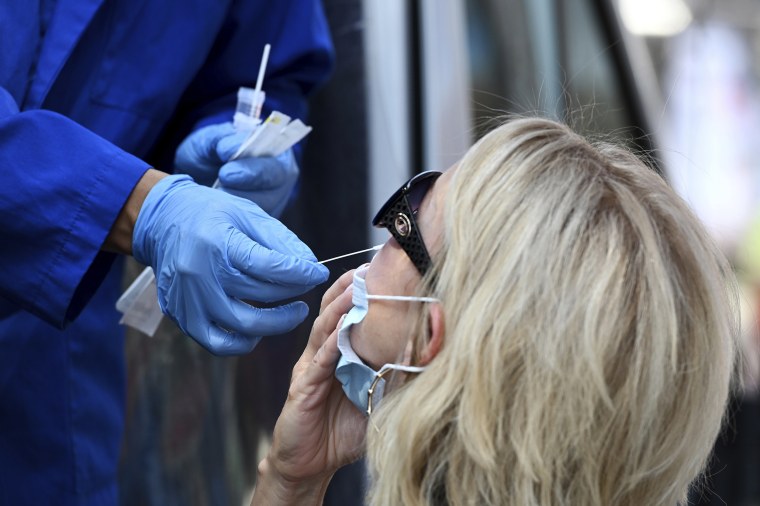A new Covid variant is spreading in the U.S., but will it cause a surge in cases?
XBB.1.16 — dubbed “Arcturus” on social media — is another descendant of omicron. It was first detected in early January and the majority of cases have been seen in India so far. It’s been steadily rising in the U.S. in recent weeks, although it still made up slightly less than 10% of new confirmed Covid cases as of Saturday, according to the Centers for Disease Control and Prevention.
Last week, the World Health Organization deemed XBB.1.16 a “variant of interest” as it continues to spread and outcompete other variants.
Ali Mokdad, a professor of global health at the University of Washington, said it’s still too early to predict what XBB.1.16 will do. But what he’s seen so far has been reassuring.
“We haven’t seen an increase in hospitalizations, we haven’t seen an increase in any of the indicators that make us worry,” Mokdad said.
Is XBB.1.16 more contagious?
Mokdad said that XBB.1.16 is gaining ground on the previously dominant strain in the U.S., called XBB.1.5.
That increased transmissibility appears to be due to the subvariant’s ability to avoid immune detection in the body.
“It can’t be spreading so fast unless it has some immune escape,” Mokdad said.
The virus has two ways of surviving, Mokdad said. One way is to be more infectious and evade immunity from previous infections or vaccinations, “which this one is doing,” he said. The other one is to become really deadly. “We haven’t seen that yet.”
Dr. Peter Chin-Hong, a professor of infectious disease at the University of California, San Francisco, said that aside from the increase in transmissibility, so far XBB.1.16 is not too different from XBB.1.5.
That means that “hopefully, it’s not going to be too different” in terms of how sick it makes people and how well the vaccines work.
What are the symptoms of XBB.1.16?
XBB.1.16 doesn’t appear to be making people sicker than earlier omicron strains, according to Dr. Mike Ryan, the executive director of the WHO’s health emergencies program.
“To my knowledge, we’re not seeing a different spectrum of symptoms or severity associated with this variant of interest,” Ryan said during a media briefing last week.
Some news reports have mentioned that XBB.1.16 infection causes a “new” symptom — conjunctivitis, or pink eye — though the WHO noted that this symptom was already known to be associated with Covid. As early as the spring of 2020 there were reports of itchy, sore eyes in Covid patients. In May 2020, the American Academy of Ophthalmologists noted that mild conjunctivitis could be a symptom of Covid.
"It's not a new symptom," but it may be more common than previously thought, Chin-Hong said.
Do vaccines work against XBB.1.16?
Mokdad said that labs haven’t yet determined how well the Covid vaccines work against XBB.1.16.
Chin-Hong said he wasn't particularly concerned about the vaccines.
"Because it's so similar to XBB.1.5, we think that vaccines will be fine," he said.
Last week, the Food and Drug Administration and the CDC said that older adults and immunocompromised individuals could get a second dose of the updated booster shot, which protects against an earlier omicron subvariant.
Why are there always new variants?
XBB.1.16 certainly won’t be the last new variant that emerges. The subvariant is yet another offshoot of the growing omicron family tree.
XBB.1.16 is a descendant of the XBB subvariant, which itself formed when two strains of omicron subvariant BA.2 combined, according to the WHO.
Already, two other XBB strains, XBB.1.9.1 and XBB.1.9.2 are also rising in the U.S. Together, the two strains account for about 11% of new cases, according to the CDC.
On Wednesday, the WHO's technical lead for Covid-19, Dr. Maria Van Kerkhove, said the XBB.1.9 strains are likely similar to what’s been seen with previous XBBs.
“This just indicates to us that the virus continues to evolve and it will continue to evolve because the virus is circulating pretty much unchecked,” Van Kerkhove said.
Follow NBC HEALTH on Twitter & Facebook.


